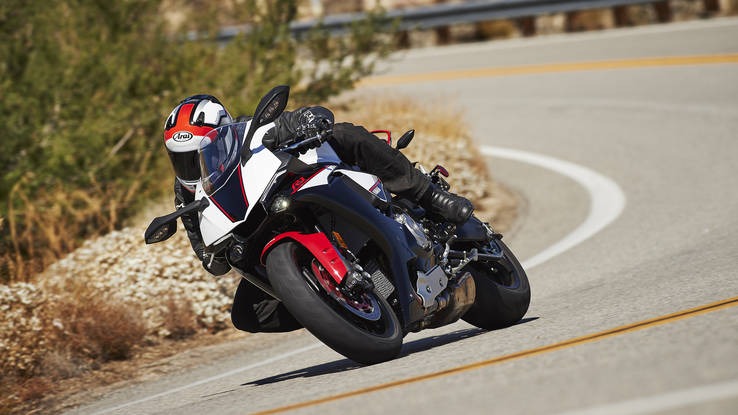Newest Yamaha is almost as fast as the R1 but a couple grand less
Hidden in the middle of the Yamaha 2016 new model presentation was what may be the best performance buy in the company’s lineup: the new YZF-R1S.
You may have heard about the all-powerful, all-conquering YZF-R1 and R1M, two all-out performance liter bikes that’ll keep you screaming through entire corners and even well down the straights. Problem is, those bikes cost a lot of money — over the 20 grand mark for the ultimate R1M ($ 21,990) and $ 16,490 for the R1. But starting in February you’ll be able to purchase most of that performance for $ 14,990 in the new YZF-R1S. That $ 1500 – or $ 7500 – could mean the difference between buying a performance bike and buying a commuter.
“We noticed that in the 1000-cc category a lot of guys never go to the track,” said Derek Brooks, Yamaha product planning manager. “Only eight percent of owners ever took their bikes to the track.”
That doesn’t mean those buyers don’t want the same performance they would want in a track bike, though. So Yamaha made a few minor changes to the YFZ-R1 and will soon offer the new YZF-R1S, taking pains to ensure that the new creation “…isn’t just a detuned R1.”

The R1S offers the same electronics found on the R1, including slide control and wheelie control.
The biggest difference is that the R1S has steel connecting rods instead of titanium, the slightly greater mass of the steel limiting top-end revs and thus peak horsepower. However, just below the peak (and in fact all the way down to idle), the power and torque curves from the 998-cc four-cylinder are almost exactly the same. Plus, you still get the sophisticated electronics of the R1 that come with Yamaha’s six-axis Inertial Measuring Unit, what Yamaha calls “3D controllability.” That includes: traction control, slide control, anti-wheelie control, launch control, ABS and Yamaha’s Unified Braking System. Together they and the R1S will help riders get the most out of their bikes in a safer way.
True to motorcycle industry custom, Yamaha would not say exactly how much power and torque are lopped off the top, but on a chart it looked like very little. Other differences include an aluminum oil pan instead of magnesium, five-spoke aluminum wheels instead multispoke mags, and the Quick Shift QSS becomes an option instead of standard.
“The previous R1 was only $ 500 less than this bike,” Brooks pointed out. “So to go from the previous R1 to this bike with all the engine and chassis performance certainly is a great value.”
There are other 1000-cc superbikes out there, and the manufacturers of each think its offering represents a great value, but the presence of the electronic controls certainly separates the R1S from some, if not most, of the field and make it a bargain worth looking at. You have until February, after all.




























